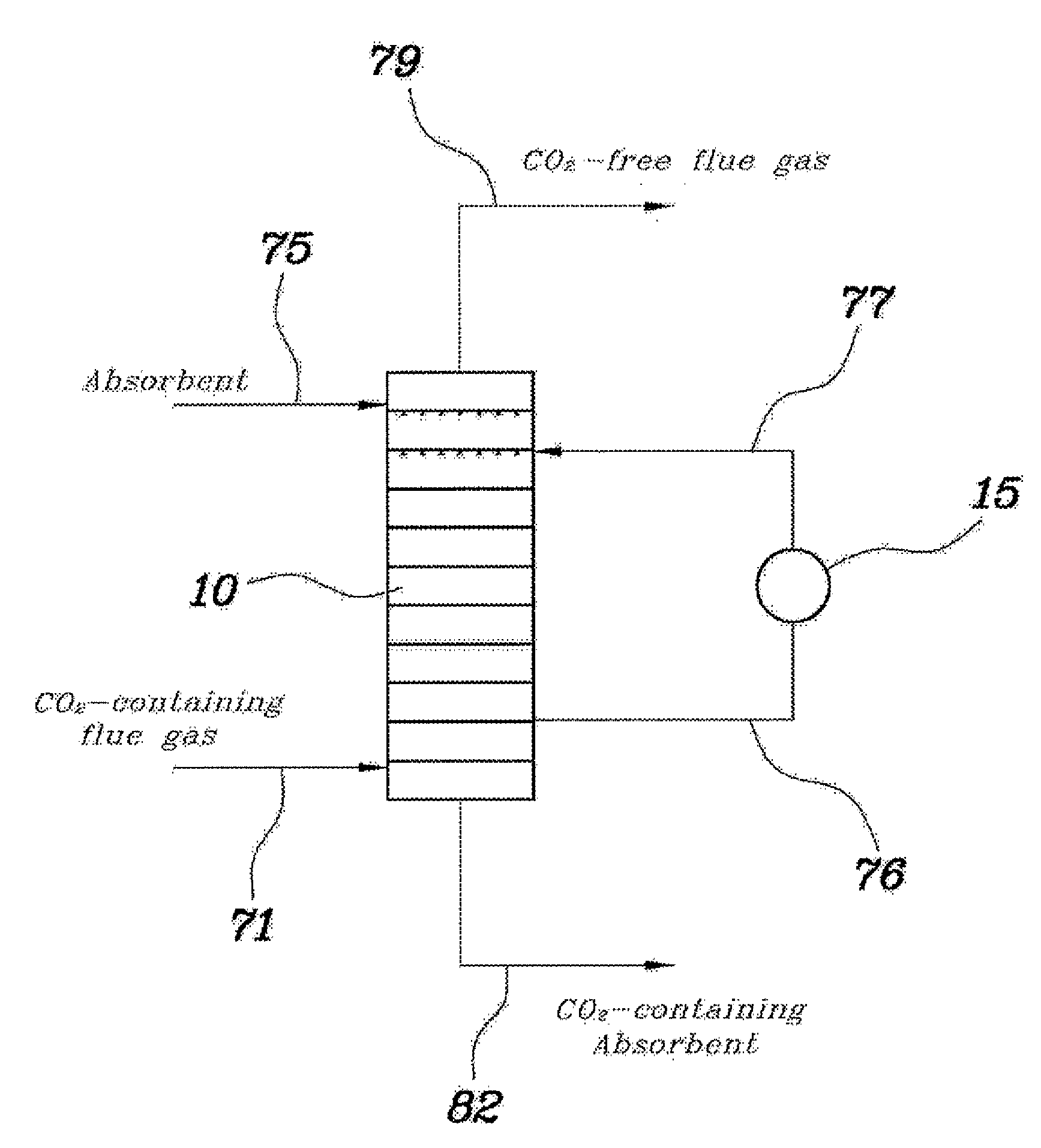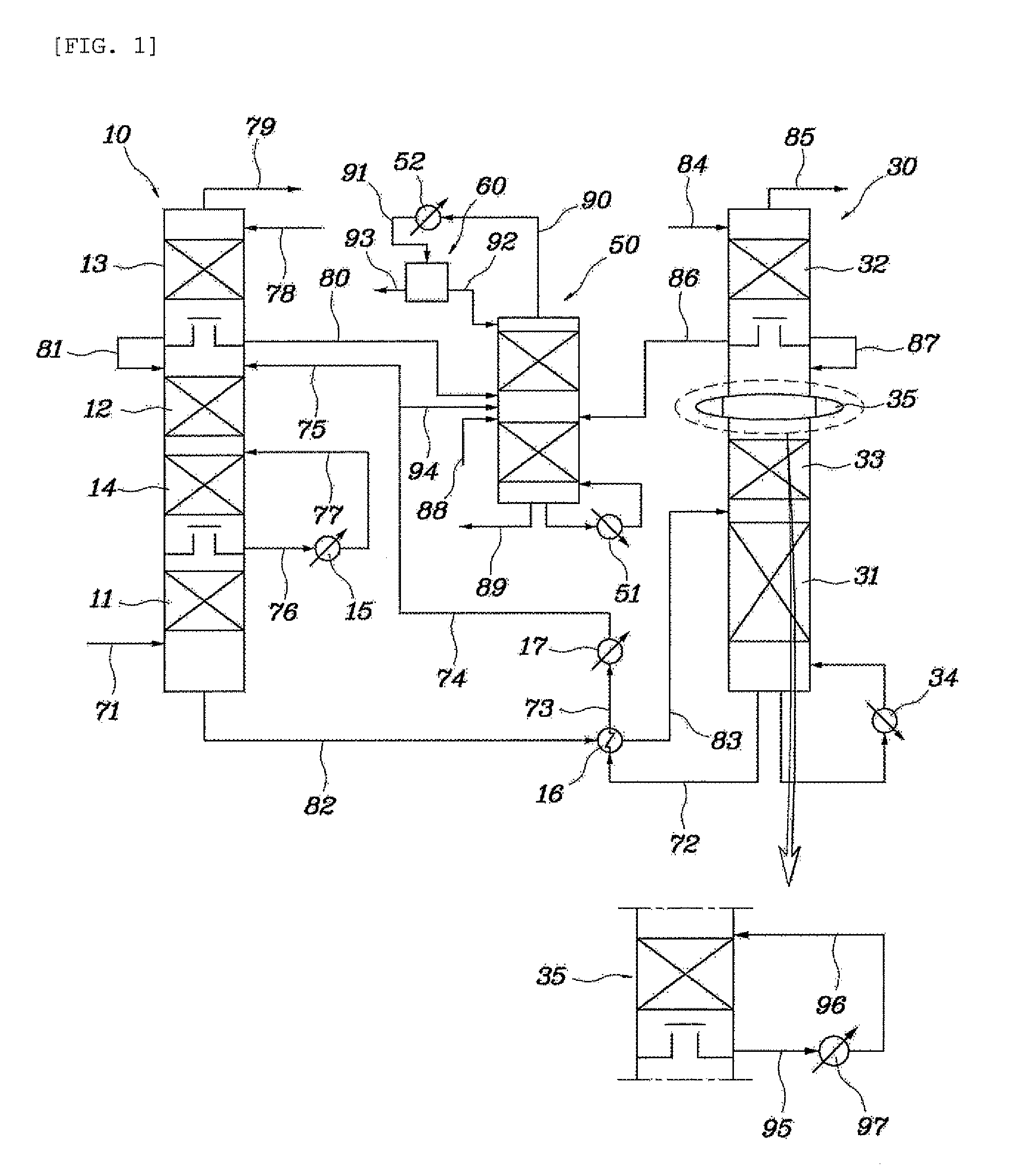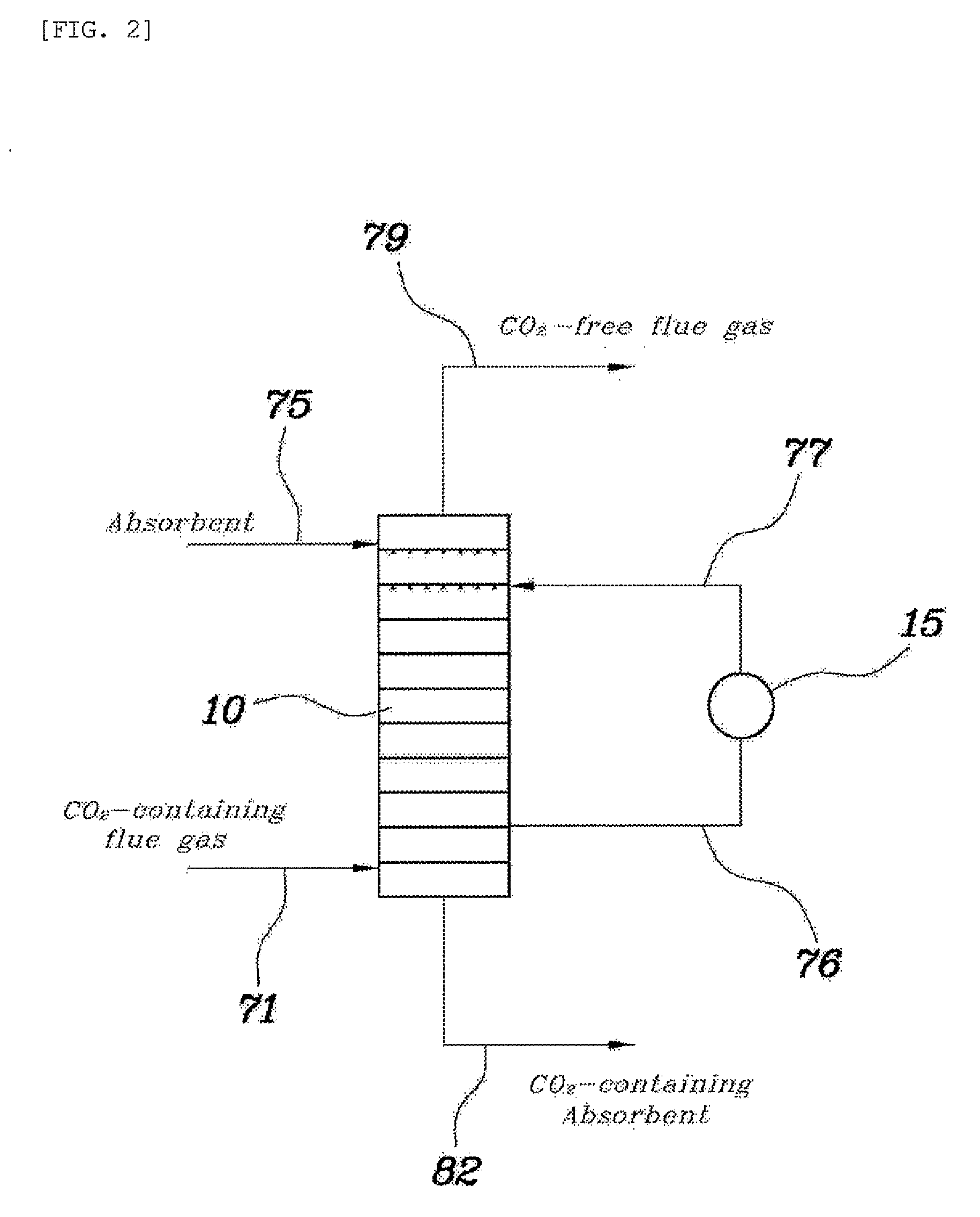Apparatus and Method for Recovering Carbon Dioxide from Flue Gas Using Ammonia Water
a technology of ammonia water and carbon dioxide, which is applied in the direction of liquid degasification, separation processes, and emission prevention. it can solve the problems of increasing treatment costs, increasing the concentration of ammonia in the regeneration column, and clogging of the absorption column and the regeneration column, so as to prevent the volatilization of ammonia and reduce the temperature of the absorbent , the effect of increasing the absorption efficiency of carbon dioxid
- Summary
- Abstract
- Description
- Claims
- Application Information
AI Technical Summary
Benefits of technology
Problems solved by technology
Method used
Image
Examples
example 1
[0049]An absorption column having the same structure and size as in the comparative example and a model gas having the same composition were used, and the absorbent was recovered from the fourth tray from the top of the absorption column, in which the temperature was the highest, cooled to 30° C., and then supplied again to the fourth tray from the top thereof. As such, the amount of the absorbent that was recovered was ⅙ of the amount initially fed to the absorption column.
[0050]As the result of Example 1, the temperature distribution inside the absorption column is depicted in FIG. 4. The carbon dioxide absorption efficiency was determined to be 88%.
example 2
[0051]An absorption column having the same structure and size as in the comparative example and a model gas having the same composition were used, and the absorbent was recovered from the fourth tray from the top of the absorption column, in which the temperature was the highest, cooled to 20° C., and then supplied again to the fourth tray from the top thereof. As such, the amount of the absorbent that was recovered was ⅓ of the amount initially fed to the absorption column.
[0052]As the result of Example 2, the temperature distribution inside the absorption column is depicted in FIG. 5. The carbon dioxide absorption efficiency was determined to be 91%.
example 3
[0053]An absorption column having the same structure and size as in the comparative example and a model gas having the same composition were used, and the absorbent was recovered from the fourth tray from the top of the absorption column, in which the temperature was the highest, cooled to 25° C., and then supplied again to the third tray from the top thereof. As such, the amount of the absorbent that was recovered was ⅓ of the amount initially fed to the absorption column.
[0054]As the result of Example 3, the temperature distribution inside the absorption column is depicted in FIG. 6. The carbon dioxide absorption efficiency was determined to be 91%.
[0055]As is apparent from Examples 1 to 3, part of the high-temperature absorbent was recovered and cooled by the circulation cooler, and was then supplied again into the absorption column, and thereby, the carbon dioxide absorption efficiency was remarkably increased compared to that of the comparative example.
[0056]In the present inve...
PUM
| Property | Measurement | Unit |
|---|---|---|
| Temperature | aaaaa | aaaaa |
| Temperature | aaaaa | aaaaa |
| Concentration | aaaaa | aaaaa |
Abstract
Description
Claims
Application Information
 Login to View More
Login to View More - R&D
- Intellectual Property
- Life Sciences
- Materials
- Tech Scout
- Unparalleled Data Quality
- Higher Quality Content
- 60% Fewer Hallucinations
Browse by: Latest US Patents, China's latest patents, Technical Efficacy Thesaurus, Application Domain, Technology Topic, Popular Technical Reports.
© 2025 PatSnap. All rights reserved.Legal|Privacy policy|Modern Slavery Act Transparency Statement|Sitemap|About US| Contact US: help@patsnap.com



